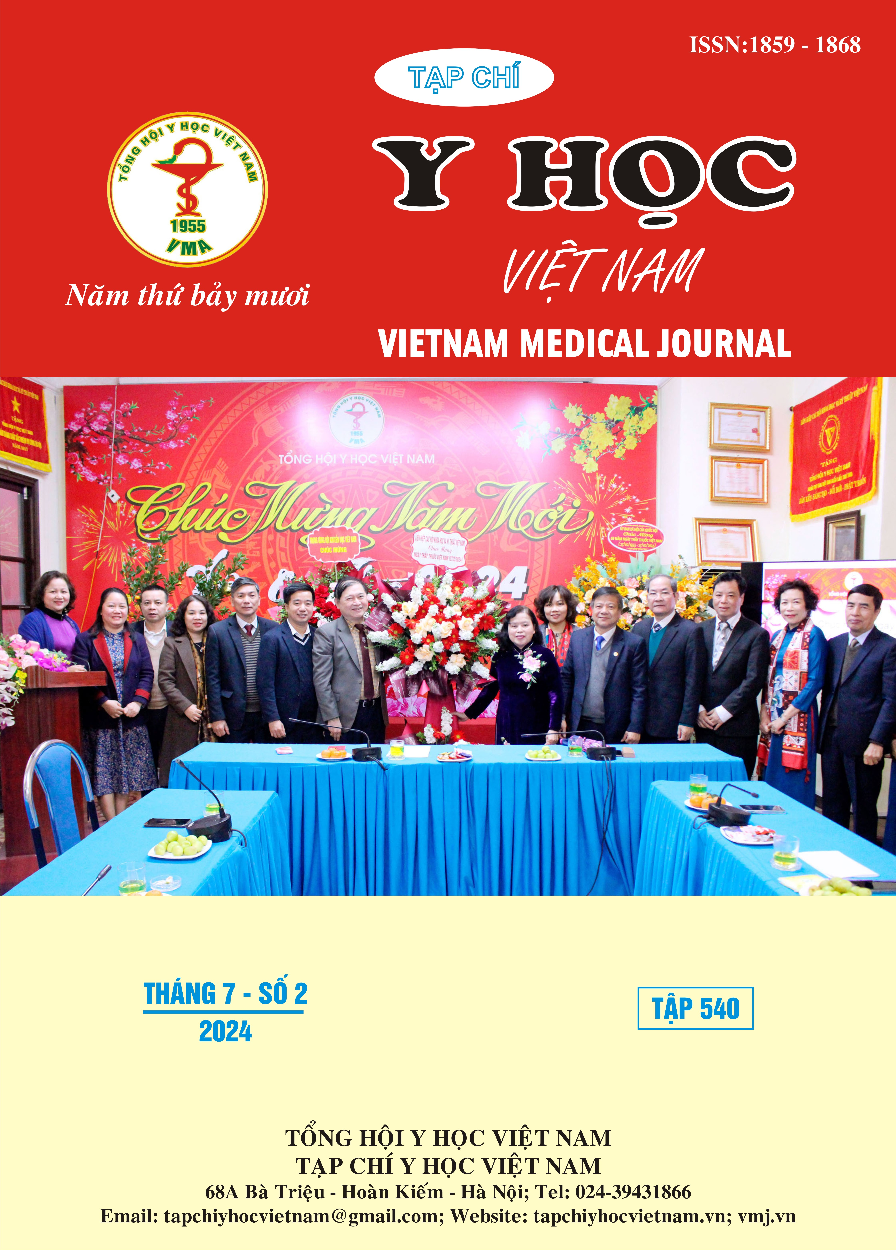EVALUATION CORTICAL ADAPTION SYSTEM AFTER USING THE MASSETERIC NERVE IN FACIAL REANIMATION: 85 CASES
Main Article Content
Abstract
Background: From the 70s, the cross facial nerve graft were used by Smith, Anderl, Scaramelia and Tobias to restore facial nerve function from the healthy side. But due to the long section, it is required to have a long transmission time, in addition, on the path of the graft section, there are 2 connecting points that prevent axonal regeneration, so the result of functional rehabilitation of the facial muscles is limited. A series of writers such as Sunder, Spira, Conley and Backer used masseteric nerve as a source for facial plasy with very positive results and little sequelae. However, this is nerve transfer (or borrow) method so to get the best results rehabilitation plays an important role. Subjects and research methods: The clinical cross study with 85 patients treated facial paralysis by using massetric nerve from 2015-2023. The patient was divided into 02 groups: Time onset of facial nerve injury less than 24 months and another group’s patients with time onset nerve injury over 24 months. Evaluate the results of cortical adaption of restoration function facial movement at short term result (3-6 months after surgery) and the long term results (from 6 months to the end of the study period). Results: From 2015-2023, 85 patients were treated with paralysis using masseteric nerve source. 45 patients with nerve injury less than 24 months, 40 patients with chronic facial paralysis. Rehabilitation results: Short term results: the time onset of muscle contraction averaged 3,8 months; The long term results are far from the FNGS 2.0 scale: patients reach level II accounting for 74,1%, level III accounts for 20% and level IV 5,9%; average oral excursion movement of the paralysis side: 8.5 mm, spontaneous smile without jaw reaching 41,2%. Rehabilitation function before mirrors according to instructions: at least 3 times / day: 57,6%; more than 3 times / day: 42,6%. Conclusion: From this result shows the effective of the method in restoration facial muscle movement, rehabilitation is quite simple and brings early recovery time, sequelae is minimal when its compared to other nerve transfer methods.
Article Details
Keywords
masseteric nerve, facial palsy, cortical adaption system
References
2. Chwei-Chin Chuang, D., et al., Comparison of Functional Results After Cross-Face Nerve Graft-, Spinal Accessory Nerve-, and Masseter Nerve-Innervated Gracilis for Facial Paralysis Reconstruction: The Chang Gung Experience. 2018. 1.
3. Bermudez, L.E. and L.E. Nieto, Masseteric-facial nerve anastomosis: case report. J Reconstr Microsurg, 2004. 20(1): p. 25-30.
4. Spira, M., Anastomosis of masseteric nerve to lower division of facial nerve for correction of lower facial paralysis. Preliminary report. Plast Reconstr Surg, 1978. 61(3): p. 330-4.
5. Bradbury, E., W. Simons, and R. Sanders, Psychological and social factors in reconstructive surgery for hemi-facial palsy. Journal of Plastic, Reconstructive & Aesthetic Surgery, 2006. 59(3): p. 272-278.
6. Buendia, J., et al., Functional and anatomical basis for brain plasticity in facial palsy rehabilitation using the masseteric nerve. Journal of Plastic, Reconstructive & Aesthetic Surgery, 2016. 69(3): p. 417-426.
7. Biglioli, F., et al., Masseteric–facial nerve anastomosis for early facial reanimation. Journal of Cranio-Maxillofacial Surgery, 2012. 40(2): p. 149-155.
8. Manktelow R.T., Z.R.M., Facial Paralysis. Current therapy in Plastic surgery 2006 Saunders Elsevier 1600 John F.Kennedy Blvd Ste 1800 Philadelphia, PA 19103-2899 194-202.
9. Biglioli, F., et al., Recovery of emotional smiling function in free-flap facial reanimation. Journal of Oral and Maxillofacial Surgery, 2012. 70(10): p. 2413-2418.


